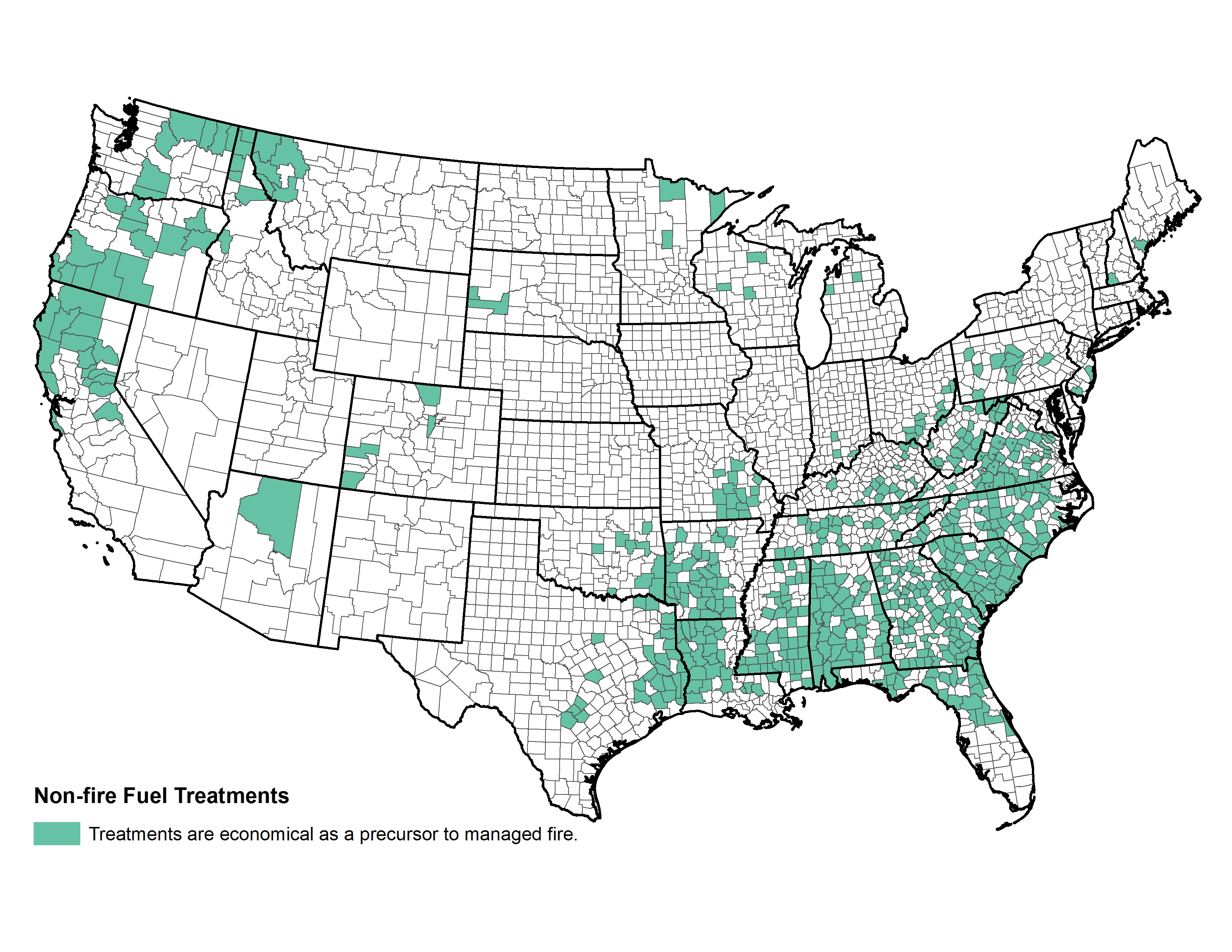Fuel Treatments as a Precursor to Prescribed Fire or Managed Wildfire
Data explanation: There is current prescribed fire activity or potential for prescribed fire in these forested or agricultural counties. There are timber jobs and mechanical treatment potential [Option 1A, 1B, 1C and Option 3A].
A variant on the theme of non-fire fuel treatments highlights areas where economically sustainable mechanical treatment could be used as a precursor to, and combined with, safer and more expanded use of wildland fire. The intent is to use mechanical treatments strategically to reduce the risks from wildland fire use across a broader landscape. For example, mechanical treatments in pine plantations that are located between communities and wildland areas might facilitate prescribed fire use or allow greater response flexibility in the wildlands. Essentially, this involves an intersection of Options 1 and 3.a. The net result is Option 4 (figure 3.6), which includes many southeastern counties, the Pacific Northwest, and scattered interior counties.
Conclusion: Fuel treatments involving mechanical, biological, or chemical methods offer many advantages in terms of greater control over the outcome and reduced risk of unintended consequences. The disadvantage is usually higher economic cost, which in some cases can be offset by active economic markets for the byproducts of the treatment.
